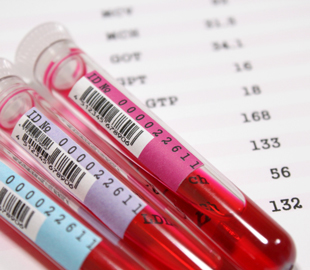Blood testing
Blood testing has been used to detect alcohol levels for many years.
When testing blood for alcohol, the test looks at markers for both Liver Function Test (LFT) and Carbohydrate Deficient Transferrin (CDT) testing. We would use an analysis of the combined markers to give you a better picture of alcohol levels of a donor.
What is Liver Function Testing (LFT)?
A Liver Function Test (LFT) helps review any liver damage and consists of a number of tests that are run at the same time. When damage occurs to the liver the biomarkers in the blood stream are altered allowing any impairment to be highlighted.
A liver function test (LFT) provides you with a picture of the liver damage through excessive alcohol use. Elevated levels of the biomarker glutamyltransferase (GGT) may be because of the liver enzyme stimulation by alcohol, whereas elevated levels of the biomarkers aspartate aminotransferase (AST) and alanine aminotransferase (ALT) may indicate liver cell damage. There are other reasons why these biomarkers may be elevated, generally due to other medications or health problems.
Please note that a normal LFT result is a very poor indicator of alcohol use, unless there has been a clear pattern of LFT elevation prior to the reading in question.
What is Carbohydrate Deficient Transferrin (CDT)?
When we test for carbohydrate deficient transferrin we measure the percentage of carbohydrate molecules that are bound to transferrin (a protein that transports iron around the body) in the blood. The amounts of alcohol that are consumed can interfere with the binding of carbohydrate molecules to transferrin, causing elevated levels of transferrin that are missing the carbohydrate molecule.
Excessive alcohol consumption over a 2-4 week period may indeed elevate the amount of transferrin that is carbohydrate deficient thereby being a good marker to help show recent alcohol use.
What is Mean Cell Volume (MCV)?
In chronic alcohol use, red blood cell size increases and serially elevated readings can confirm a history of heavy alcohol use, clinical examination or other markers. A normal reading after serially elevated readings can be helpful in confirming low alcohol use or abstinence. No blood test on its own can give definitive evidence of abstinence or otherwise.
Sample collection
A blood sample can be taken by one of our specialists. We are able to take a hair sample at the same time if required for your specific case, saving time and money plus saving your client the problem of having to visit your offices as well as ours to have the sample taken. Let us do the job for you. The sample will be taken under strict chain of custody procedure and passed to the laboratory for analysis.
We use a UKAS/COFRAC Accredited Laboratory for analysis of blood samples. CDT samples are taken to the lab within a few hours of being collected.

